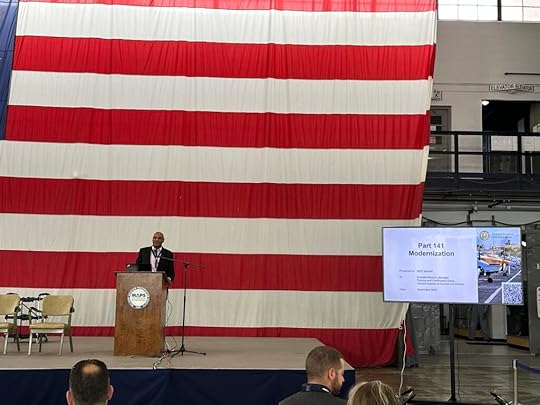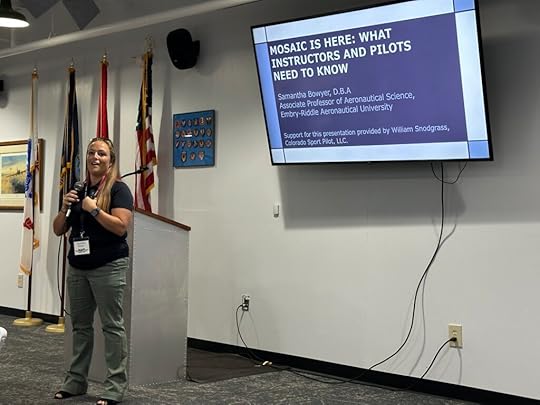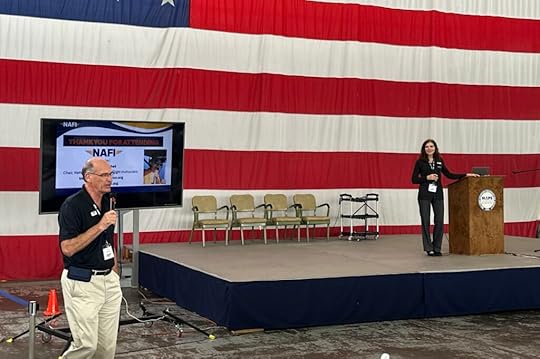NAFI Summit: The FIRC In Between
When I began the technical writing phase of my career, in 1997, I joined Jeppesen’s Aviation Courseware Development department. Led at the time by editor Pat Willits, ACD had the responsibility of producing Jepp’s distance-learning flight instructor refresher clinic (FIRC), delivered on VHS cassettes for $199 (plus tax and shipping).
The FIRC allowed instructors for the first time to complete their every-two-years certificate renewal without having to attend an in-person or “live” FIRC, which were held over the course of two days (16 training and testing hours total), in hotel conference rooms across the U.S.
After securing my initial CFI certificate in 1993, I renewed first by getting my CFI-Instrument in 1994, placing my renewal on its current even-years rhythm. For my first renewals, I attended AOPA’s live FIRCs, where I enjoyed meeting fellow instructors and sharing stories and best practices as well as a laugh or two about the commiserate moments of working with student pilots.
After a year or so at Jepp, I was promoted to Assistant Editor, and tasked with acting as its Airman Certification Representative (ACR), responsible for the physical review and signing of every FAA 8710 form that came in with the FIRC completion before the CFI’s new certificate could legally be issued. Every week I’d go upstairs to the customer service area and sign roughly 50 to 100 of the forms.
My first brush with aviation fame came when I signed Patty Wagstaff’s 8710.
Jepp went on to develop and produce in concert with AOPA the second online FIRC to gain approval from the FAA, and I was part of the team that put it together. With online FIRCs now composing the grand majority of CFI renewals, the live FIRC has all but vanished. Most instructors just “get it done” every two years, take in the minor and major updates to the regs and processes, and honestly probably retain little else from the exercise. The FAA requires the 16-hour training curriculum, and while providers strive to keep us entertained whilst sitting in front of the laptop or clutching an iPad for that period, it’s probably not something most of us would choose to participate in, given the choice.
We still find more meaning in connecting face to face.
 The Douglas C-47 Ruptured Duck has no engines in its nacelles as it stands outside the MAPS Museum at the Akron-Canton Airport in Ohio. [Credit: Julie Boatman]
The Douglas C-47 Ruptured Duck has no engines in its nacelles as it stands outside the MAPS Museum at the Akron-Canton Airport in Ohio. [Credit: Julie Boatman]
 A panel on mental health for pilots at NAFI Summit was moderated by Dr. Victor Vogel, and included Federal Air Surgeon Dr. Susan Northrop, former NTSB member Greg Feith, and Dr. Tony Reed, with Samantha Bowyer behind the podium. [Credit: Julie Boatman]
A panel on mental health for pilots at NAFI Summit was moderated by Dr. Victor Vogel, and included Federal Air Surgeon Dr. Susan Northrop, former NTSB member Greg Feith, and Dr. Tony Reed, with Samantha Bowyer behind the podium. [Credit: Julie Boatman]For Monday and Tuesday of this week, I attended the Summit hosted by the National Association of Flight Instructors. NAFI’s two-day conference this year, at the MAPS Museum at the Akron-Canton Airport (KCAK) in Ohio, featured about… 16 hours of presentations on a buffet of topics eerily similar to those covered within a standard FIRC TCO (training course outline).
The Summit kicked off with presentations from FAA AFS-810 manager Everette Rochon on the Part 141 Modernization rulemaking group progress, and two panels, one gathering experience designated pilot examiners (DPEs) Karen Kalishek, Katie Sample, and Jason Blair, and the mental health one moderated by Dr. Victor Vogel, with Federal Air Surgeon Dr. Susan Northrop, Greg Feith, and Dr. Tony Reed.
 Head of FAA AFS-810 Everette Rochon presented at the NAFI Summit on the progress on Part 141 Modernization. [Credit: Julie Boatman]
Head of FAA AFS-810 Everette Rochon presented at the NAFI Summit on the progress on Part 141 Modernization. [Credit: Julie Boatman]
 ERAU professor Samantha Bowyer outlined the changes brought into reality by the passing of MOSAIC for pilots and aircraft certification. [Credit: Julie Boatman]
ERAU professor Samantha Bowyer outlined the changes brought into reality by the passing of MOSAIC for pilots and aircraft certification. [Credit: Julie Boatman]Martha and John King (whose Kings Schools online FIRC I’ve taken many times) led a talk on risk management, with easy mnemonics to use on the flight deck to enable solid aeronautical decision making. Samantha Bowyer, professor at Embry-Riddle Aeronautical University, outlined the changes brought forth by the passing of the MOSAIC ruling for pilot and aircraft certification, with a lively Q&A trying to find clarity on the topic. And Dr. Reed walked instructors through the ways they can make lifestyle changes to support their own physical health.
Day Two featured more breakout sessions, with great choices to select from, including how to ensure the first hours of training connect with the prospective student, as well as the use of AI in training, implementation of sims within a course syllabus, and a deep dive on spins, slips, and skids. Mental health was addressed in more detail by Dr. Rob Zeglin, and Judge Couch zoomed in remotely to illuminate the process behind the NTSB’s Office of Administrative Law and how to mitigate and protect against certificate actions as an instructor.
 Martha and John King presented at the NAFI Summit on their experience and how it relates to teaching sound aeronautical decision making and risk management. [Credit: Julie Boatman]
Martha and John King presented at the NAFI Summit on their experience and how it relates to teaching sound aeronautical decision making and risk management. [Credit: Julie Boatman]
 NAFI’s Paul Preidecker and Karen Kalishek give closing remarks at the NAFI Summit 2025 in Ohio. [Credit: Julie Boatman]
NAFI’s Paul Preidecker and Karen Kalishek give closing remarks at the NAFI Summit 2025 in Ohio. [Credit: Julie Boatman]All in all, with the exception of the TSA training session, I felt nothing was missing from the program that would preclude it counting as a CFI renewal. NAFI currently gives FAA WINGS credit for the session, which helps a pilot complete ongoing training in lieu of a flight review, but it would gain a lot of value for attendees if the Summit could become, yes, an in-person FIRC for its investment of $300 to attend.
It certainly gave that value to me.
But the best part of the event came in the new connections I forged with fellow instructors, and the longtime friendships we have kept in the industry over the years. In those in-between moments, sitting around a table of 8 with a standard Midwestern buffet lunch, I met CFIs from around the country and across the globe, and understood again how much we have in common, and how much we can learn from each other, simply by taking the time and listening.
The post NAFI Summit: The FIRC In Between appeared first on JulietBravoFox Media.



